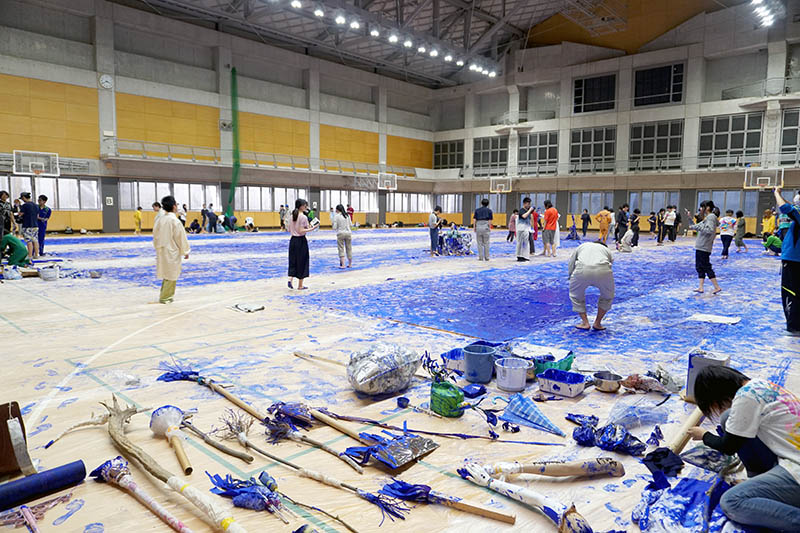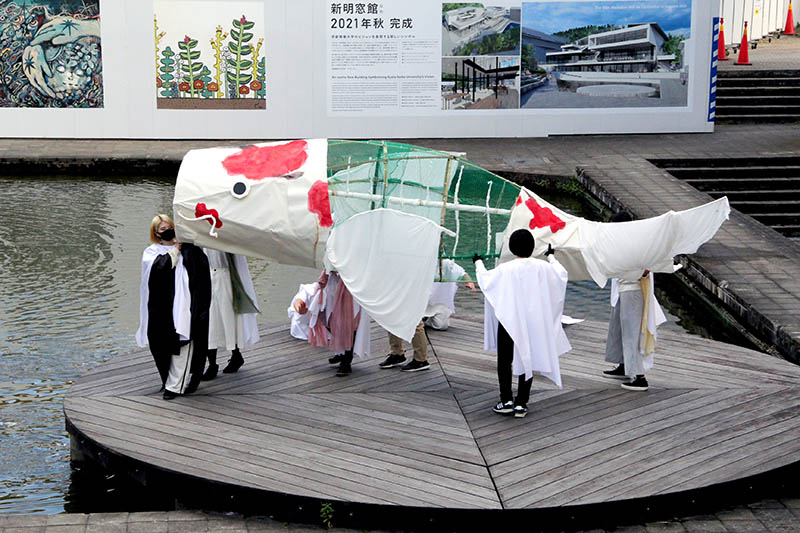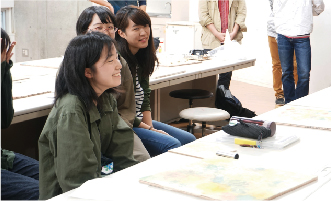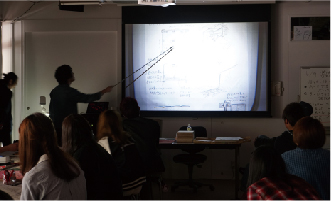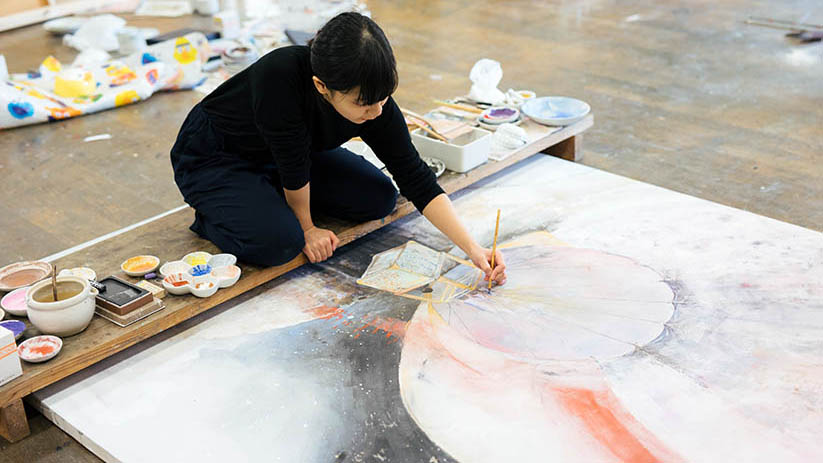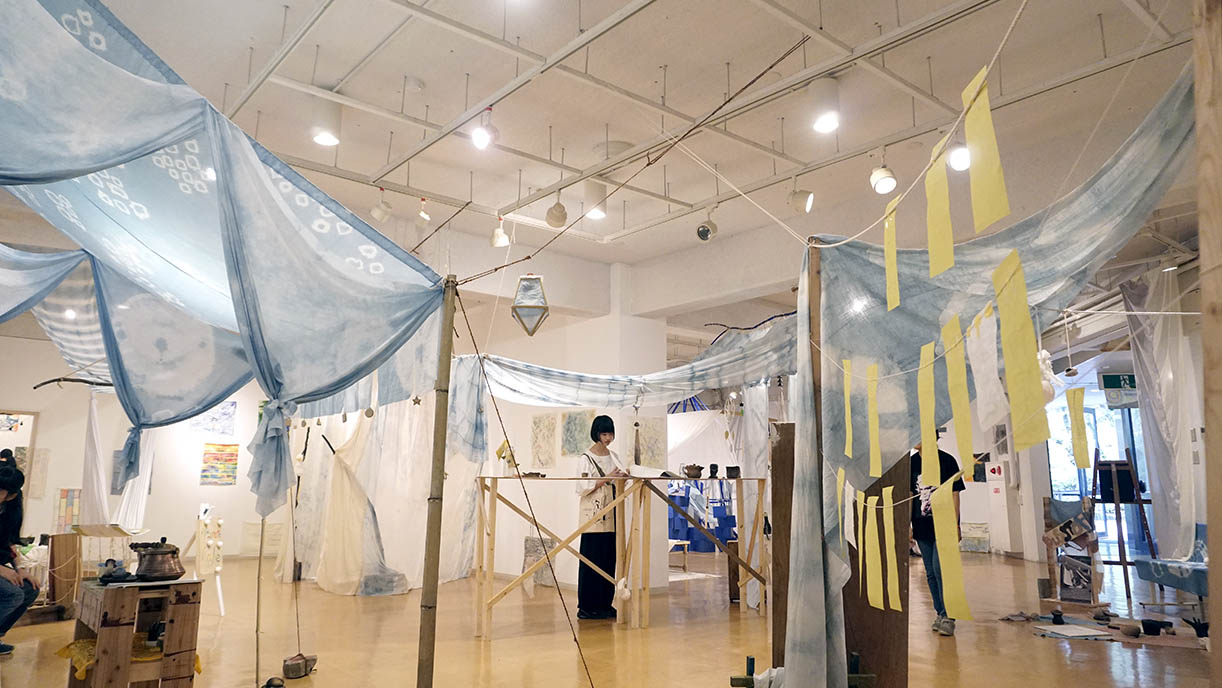
TAIKAN: A New Curriculum to Empower Students
One distinguishing feature of the Faculty of Art curriculum is that students have plenty of time to explore in their first year of study before choosing a course when they advance to their second year. During the first year, emphasis is placed on learning across different disciplines without being limited to any one area or specialization. With more opportunities to see things from different perspectives, students are able to discover their hidden talents and potential, which helps them choose the specialization that suits them best.
Our TAIKAN Basic Art Education program is a pillar of first-year general education. The word taikan means “torso” or “trunk,” and just as the word “trunk” implies, this program provides the firm foundation needed to become an artist or creator, improving students’ observational skills, critical thinking, and imagination. While art education tends to focus only on creation, here, students learn the ideas and mindsets that lie at the heart of expression. Students will require the power of a common language that transcends the framework of their specialization when putting art to work in society, of which we are all a part.
Empowerment Through LearningThis program isn’t only about creating. It helps students improve their observational skills, critical thinking, and imagination to develop a way of thinking that lies at the heart of expression.
- This program isn’t only about creating. It helps students improve their observational skills, critical thinking, and imagination to develop a way of thinking that lies at the heart of expression.
- Classes use humor as a tool for students from different specializations to learn the basics of painting, crafts, sculpture, and design.
The TAIKAN Basic Art Education program divides first-year undergraduates into classes of about 25 students each. The year is divided into four periods: “Visual Creation," "Material Combination," "Object Translation," and "Expressive Variation." Through each, students repeatedly employ practice and theory to tackle issues that focus on exploring the possibilities of expression. One aim of the Metier Foundation Course, in which students join different classes to learn several disciplines, is to encourage them to interact with students from other fields of expertise.
Examples of Classes
For example, in the “Visual Creation” portion of the first term, students are challenged to go beyond using pencils, charcoal, and conté crayons to harness sumi ink, diatomaceous earth, and other types of materials to control visual information and incorporate them into modes of pictorial expression. Students broaden their range of expression through purposeful thinking, jotting down a quick, rough sketch of a landscape, or taking the time to draw in exhaustive detail until they are satisfied with the result.
An Eye for Detail
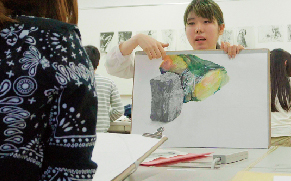
Students pair off and pick up natural objects the size of their palm, carefully observing its details, touching it with their hands, smelling it, and looking at it through a magnifying glass. They draw with each of their senses and are free to use whatever material and mode of expression they choose, the beauty of which must be put into words to explain to their partner.
Expression Within the Texture of an Old Wall
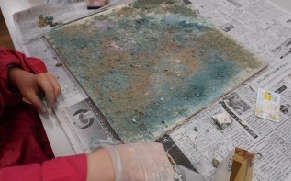
Students reproduce the texture of an old wall in this assignment, conducting fieldwork to record images of old walls through observation, sketches, and rubbing before recreating their own original wall by coloring, scratching, and layering materials based on these images.
Presentation & Critique
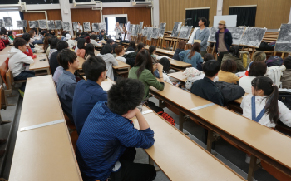
From the students’ first year, emphasis is placed on communicating the intent of their work to others. In "Visual Creation," all of the students in that year level display their works in one place. Each student gives a presentation on their pieces before talking about and critiquing other students’ work. They broaden their horizons by seeing all of the other students’ work and listening to their presentations.
Academic Faculty
NAKANO Yusuke (General Instructor/TAIKAN Basic Art Education)
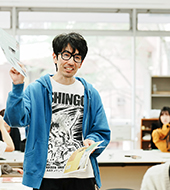
Nakano has been a member of the art duo PARAMODEL since 2003. He joined the teaching staff at the Faculty of Art in 2017.
My creative activities are centered on drawing and textual/spatial expression, and cross a wide range of disciplines, including literature, philosophy, and architecture. My experiences as a Japanese painting major in college, my art activities as a “paramodel,” and my work at the library have combined to lead me to my current research. My emphasis is on “playfulness,” “freedom,” and “having fun.
In physical education, I want students to experience the joy of expression during their “freshman year,” a precious time when nothing is set in stone yet. I myself am always inspired by the students' free ideas and playful spirit.
The experience of challenging oneself and going beyond one's own boundaries, even if it is rough, becomes the “core” of creativity, and will surely be useful in whatever path one chooses to pursue after graduation. I will do my best to support students to cultivate a free and positive mindset through collaboration and challenges with friends.
NAKAMURA Yuta (General Instructor/TAIKAN Basic Art Education)
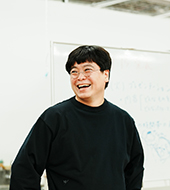
Nakamura considers his academic research and production of ceramic and tile works from the perspective of crafts related to folk customs and architecture. He joined the teaching staff at the Faculty of Art in 2017.
I am interested in post-modern Japanese craft culture, especially the Mingei (folk craft) movement and its surrounding craft movements, and have been presenting my work based on literature research. Recently, I have focused on the ceramic artist Ishiguro Munemaro, and am working with specialists in various fields on a project to examine the culture of Yase, where he made ceramics in his later years. In our research, we place importance on objectivity while maintaining respect for the subject matter.
In the physical education program, we aim to have students experience the breadth and depth of the arts through the experience of creating works of art while moving their bodies and collaborating to create new culture, using the entire university as a campus, without being bound by the framework of “art”.
We hope that students will develop the ability to express their own ideas through the fun and difficulty of creating art. I also believe that through expression, the way they see their daily lives will change, which will in turn give them the power to change the world.
I hope that students will understand the fun and difficulty of expressing their thoughts and feelings through the creation of their artwork. I also hope that they will acquire the ability to convey the appeal of their artwork through words.
I believe that creating artwork will change the way we see the world, which in turn will lead to the power to change the world.
Other New Curriculum Initiatives
In 2017, the Faculty of Art rolled out a course curriculum redesign. Originally students would apply and enroll in one of the seven courses of study, but the faculty has been completely restructured, offering students greater flexibility in pursuing their artistic interests. Under the new curriculum, students learn the observational, critical thinking, creativity, and communication skills needed for artists and creators. But they can also expect to acquire expertise and discover new possibilities for expression by being introduced to specialized fields.
Basic Seminars with 25 Students & 3 Academic Faculty
Basic seminars are held every other week and host group discussions that allow each student to share information about their artwork and the classes they are taking. Students learn to communicate and learn through dialogue with faculty and classmates. The basic seminar becomes a kind of homeroom to help students navigate such a cross-disciplinary curriculum.
The Freedom to Choose Classes Across Seven Courses
The METIER Foundation Course was started as a general core class for first-year students in the Faculty of Art. Metier is French for skills gained through experience, but it can also refer to the expressive technique of an artist. In their first year, students can choose a program in up to four of the seven courses in the Faculty of Art, allowing them to come into direct contact with a variety of workshops and materials. Students are sure to find an area that suits their talents.

